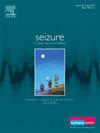双重抗癫痫药物的不良事件:来自三级癫痫诊所的真实数据
IF 2.7
3区 医学
Q2 CLINICAL NEUROLOGY
引用次数: 0
摘要
目的在癫痫患者中,抗癫痫药物不良事件(AE)可能导致患者生活质量下降和治疗依从性下降。本回顾性研究旨在确定双重ASM治疗患者总AE负担和特异性AE的危险因素。方法所有年龄在18岁以上的三级癫痫门诊患者均按常规完成利物浦不良事件表(LAEP)。从门诊数据库中提取人口统计学、癫痫和治疗变量。将临床相关变量输入二元logistic回归模型。结果在2106例患者中,595例患者采用了98种不同的组合。我们关注五种最常见的ASM组合;左乙拉西坦与拉莫三嗪(LEV/LTG, n=108)、拉柯酰胺与左乙拉西坦(LCM/LEV, n=53)、拉莫三嗪与丙戊酸(LTG/VPA, n=50)、左乙拉西坦与丙戊酸(LEV/VPA, n=27)、醋酸埃斯卡巴西平与左乙拉西坦(ESL/LEV, n=22)。通常报道的特异性AE有嗜睡(62%)、注意力难以集中(55%)、记忆问题(53%)、疲劳(46%)和睡眠障碍(40%)。相关AE负担(LAEP评分≥45)与女性、LEV/VPA-和LTG/VPA-双重治疗、耐药以及局灶性和未分类癫痫独立相关。不同类型AE主要与女性(6/19 AE)、局灶性(5/19 AE)、未分类癫痫(7/19 AE)和耐药性(4/10 AE)相关。在特定AE组合方面,只有LTG/VPA与脱发独立相关(OR 6.766)。在控制了潜在的混杂因素后,我们的研究发现,涉及丙戊酸的两种ASM组合与较高的LAEP评分显著相关,表明耐受性较差。特定的不良事件,如脱发,与LTG/VPA组合独立相关。认知副作用在所有五种双ASM组合中都非常突出。虽然双ASM治疗与AE负担的增加有关,但当单独定制治疗时,这种增加似乎是适度的。提高对不良反应的认识和系统筛查,特别是认知副作用,对优化治疗效果至关重要。本文章由计算机程序翻译,如有差异,请以英文原文为准。
Adverse events of dual anti-seizure medication: Real-life data from a tertiary epilepsy clinic
Objective
In patients with epilepsy, adverse events (AE) of anti-seizure medication (ASM) may lead to unfavorable quality of life and non-adherence to treatment. This retrospective study aimed to identify risk factors for overall AE burden and specific AE in patients with dual ASM therapy.
Methods
All patients aged at least 18 years from a tertiary epilepsy outpatient clinic routinely complete the 19-item Liverpool Adverse Events Profile (LAEP). Demographic, epilepsy, and treatment variables were extracted from our outpatient database. Variables of clinical relevance were entered into a binary logistic regression model.
Results
Out of 2,106 patients, dual ASM was applied to 595 patients with 98 different combinations. We focused on the five most frequent ASM combinations; levetiracetam and lamotrigine (LEV/LTG, n=108), lacosamide and levetiracetam (LCM/LEV, n=53), lamotrigine and valproic acid (LTG/VPA, n=50), levetiracetam and valproic acid (LEV/VPA, n=27), and eslicarbazepine acetate and levetiracetam (ESL/LEV, n=22). Commonly reported specific AE were sleepiness (62 %), difficulty concentrating (55 %), memory problems (53 %), tiredness (46 %), and disturbed sleep (40 %). Relevant AE burden (LAEP score ≥45) was independently associated with female sex, LEV/VPA- and LTG/VPA-dual therapy, drug resistance, as well as focal and unclassified epilepsy. Distinct AE were associated mainly with female sex (6/19 AE), focal (5/19 AE), unclassified (7/19 AE) epilepsy, and drug resistance (4/10 AE). Concerning specific AE combination, only LTG/VPA was independently associated with hair loss (OR 6.766).
Significance
After controlling for potential confounders, our study found that the two ASM combinations involving valproic acid were significantly associated with higher LAEP scores, indicating poorer tolerability. Specific adverse events, such as hair loss, were independently associated with the LTG/VPA combination. Cognitive side effects were notably prominent across all five dual ASM combinations. While dual ASM therapy is associated with an increased burden of AE, this increase appears to be moderate when therapies are individually tailored. Increased awareness and systematic screening of AE, particularly cognitive side effects, are essential to optimize treatment outcomes.
求助全文
通过发布文献求助,成功后即可免费获取论文全文。
去求助
来源期刊

Seizure-European Journal of Epilepsy
医学-临床神经学
CiteScore
5.60
自引率
6.70%
发文量
231
审稿时长
34 days
期刊介绍:
Seizure - European Journal of Epilepsy is an international journal owned by Epilepsy Action (the largest member led epilepsy organisation in the UK). It provides a forum for papers on all topics related to epilepsy and seizure disorders.
 求助内容:
求助内容: 应助结果提醒方式:
应助结果提醒方式:


